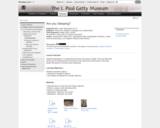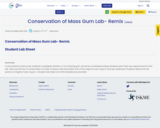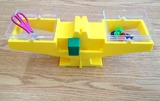
Kite Tail Measurement Mathematics Instructional Plan
- Subject:
- Mathematics
- Material Type:
- Assessment
- Provider:
- VDOE
- Author:
- VDOE
- Date Added:
- 10/04/2024

Kite Tail Measurement Mathematics Instructional Plan

How Much Does it Weigh Measurement Mathematics Instructional Plan

Will the Tablecloth Fit? Mathematics Instructional Plan

Camping Combinations Task Template and Student Version of Task

Measure in Inches and Centimeters Algebra Readiness Remediation Plan

Measure Bingo Algebra Readiness Remediation Plan

Body Part Measurements Mathematics Instructional Plan

Measuring Weight/Mass Mathematics Instructional Plan

Measuring Weight/Mass Mathematics Instructional Plan

Liquid Volume: It's My Party Mathematics Instructional Plan

Exploring strategies to develop understanding of elapsed time - Rich Mathematical Task, Student Version, Anchor Papers, and Scoring Rationale

Going the Distance Mathematics Instructional Plan

In this lab exercise, students make measurements using common lab equipment and practice a wide range of calculations. It serves as an introduction to lab measurement and calculation for a physics or chemistry course.

Students participate in a measurement lesson focusing on length. They use their feet as the unit of measurement for furniture in the classroom and at home. They then sketch the pieces of furniture they measured.

In this physical science lab, students investigate whether or not chewing gum should be considered eating. Students plan their own experiments for this lab. They use the law of conservation of mass to reason that the portion lost of the original mass of gum must be swallowed. Students determine the portion of original mass of gum. A student lab sheet and CER template are provided.

Students develop and solidify their understanding of the concept of "perimeter" as they engage in a portion of the civil engineering task of land surveying. Specifically, they measure and calculate the perimeter of a fenced in area of "farmland," and see that this length is equivalent to the minimum required length of a fence to enclose it. Doing this for variously shaped areas confirms that the perimeter is the minimal length of fence required to enclose those shapes. Then students use the technology of a LEGO MINDSTORMS(TM) NXT robot to automate this task. After measuring the perimeter (and thus required fence length) of the "farmland," students see the NXT robot travel around this length, just as a surveyor might travel around an area during the course of surveying land or measuring for fence materials. While practicing their problem solving and measurement skills, students learn and reinforce their scientific and geometric vocabulary.

Hands on Chemistry is a resource designed for use in traditional, online, and blended high school Chemistry classrooms. It was developed by Blue Ridge PBS in collaboration with Virtual Virginia. In this video, Chemistry teacher Fred Mitchell demonstrates measurement, estimation, prediction, scale, and the metric system.
Keywords: using whole numbers, principles of estimation, meters, decimeters, centimeters, millimeters
Meets VA SOL CH.1 a-f

This resource is a remix from Illustrative Mathematics (https://goopenva.org/courses/3-md-how-heavy). This resource encourages student collaboration and allows students to have a mathematical dialogue as express their understanding of units of measure. Teachers can use objects found around the house to demonstrate mathematics in the real world. I like how this resource adds flexibility in instruction, as it allows teachers to creatively add diverse manipulatives or real-life items on the balance scale. This activity scaffolds the learning process allowing students an opportunity to experience active hands-on learning to strengthen their understanding of mathematical concepts, which provides a diverse learning experience. This resource is a valuable part of building background when introducing units of measure or equations in the early elementary years of mathematics education as it provides students a concrete example of building an equation with concrete objects. Suggested Modification - A student recording sheet with illustrations has been added to the resource to allow all different types of learner to learn from a concrete idea to strengthen conceptual learning about building an equation.

The goal of this exercise is to use triangulation to investigate bias and measurement validity in parents/teachers evaluations of student health and learning.

Just in Time Quick Check Estimate and Measure Length